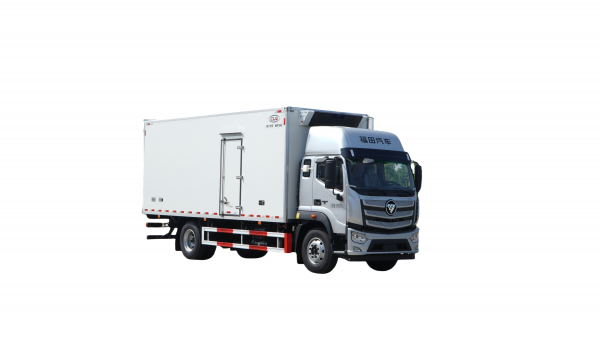Introduction
Work trucks play a vital role in various industries, from construction and landscaping to delivery services and emergency response. These vehicles are often operated in harsh weather conditions, including cold temperatures, snow, and ice. To ensure the comfort, safety, and productivity of drivers and passengers, it is essential to have an efficient heating system in work trucks. In this comprehensive guide, we will explore the different types of heating systems available for work trucks, their features, benefits, and installation considerations.
Types of Work Truck Heating Systems
1. Engine Block Heaters
Engine block heaters are a popular heating option for work trucks operating in extremely cold climates. These heaters are designed to warm up the engine block and coolant, making it easier to start the vehicle in cold weather. Engine block heaters can be electric or fuel-powered and are often installed directly on the engine block. They are relatively simple and cost-effective heating solutions that can provide instant warmth to the vehicle's engine.
Benefits of Engine Block Heaters:
- Facilitate easier engine starts in cold weather
- Reduce wear and tear on the engine components
- Improve fuel efficiency by allowing the engine to reach optimal operating temperature quickly

Considerations for Engine Block Heaters Installation:
- Ensure the heater is compatible with the vehicle's engine type
- Follow manufacturer instructions for proper installation and usage
- Use a timer to preheat the engine before starting the vehicle
2. Cab Heaters
Cab heaters are designed to provide warmth and comfort to the driver and passengers inside the work truck's cabin. These heaters are available in a variety of types, including electric heaters, diesel heaters, and propane heaters. Cab heaters can be installed under the dashboard, on the floor, or mounted on the ceiling of the cabin. They are equipped with fans or blowers to distribute warm air throughout the interior space.
https://www.worktruckmaker.com/comparing-light-medium-and-heavy-rescue-trucks-a-comprehensive-review/ of Cab Heaters:
- Maintain a comfortable temperature inside the cabin
- Improve driver and passenger comfort during cold weather conditions
- Help prevent frost and condensation on the windows
Considerations for Cab Heaters Installation:
- Determine the appropriate size and capacity of the heater for the cabin size
- Position the heater strategically to ensure efficient heat distribution
- Regularly inspect and maintain the heater to ensure optimal performance
3. Auxiliary Heaters
Auxiliary heaters are a versatile heating solution for work trucks that require additional warmth in specific areas, such as cargo compartments or equipment storage areas. These heaters can be integrated into the vehicle's existing HVAC system or installed as standalone units. Auxiliary heaters are available in various types, including forced-air heaters, radiant heaters, and hydronic heaters.
Benefits of Auxiliary Heaters:
- Provide targeted heating to specific areas of the vehicle
- Enhance the versatility and flexibility of the heating system
- Reduce the risk of damage to sensitive equipment or materials due to cold temperatures
Considerations for Auxiliary Heaters Installation:
- Determine the heating requirements of the specific area to be heated
- Ensure proper ventilation and airflow to prevent overheating
- Consult with a professional installer for complex integration with the vehicle's HVAC system
4. Fuel-Fired Heaters
Fuel-fired heaters are a popular choice for work trucks that require a powerful and efficient heating solution. These heaters are powered by diesel, gasoline, or propane and can generate high levels of heat to warm up the vehicle quickly. Fuel-fired heaters are available in a range of sizes and capacities to suit different types of work trucks. They are typically installed in the engine compartment or under the chassis of the vehicle.
Benefits of Fuel-Fired Heaters:
- Offer rapid heating capabilities for quick warm-up times
- Provide consistent and reliable heat output in cold weather conditions
- Reduce the dependency on the vehicle's engine for heating
Considerations for Fuel-Fired Heaters Installation:
- Select the appropriate fuel type based on availability and cost considerations
- Ensure proper fuel storage and ventilation to prevent safety hazards
- Follow manufacturer guidelines for installation, maintenance, and usage
5. Electric Heaters
Electric heaters are a clean and efficient heating option for work trucks that have access to electrical power sources. These heaters are typically powered by the vehicle's battery or an external power supply and can provide reliable warmth to the cabin or specific areas of the vehicle. Electric heaters are available in various configurations, including ceramic heaters, fan heaters, and radiant heaters.
Benefits of Electric Heaters:
- Environmentally friendly heating option with zero emissions
- Energy-efficient operation for cost savings in the long run
- Quiet and low-maintenance heating solution
Considerations for Electric Heaters Installation:
- Ensure the vehicle's electrical system can support the heater's power requirements
- Use high-quality electrical components and wiring for safety
- Monitor battery health and charging to prevent draining during extended heating periods
Conclusion
Work truck heating systems are essential for maintaining a comfortable and productive environment for drivers and passengers in cold weather conditions. By selecting the right type of heating system and ensuring proper installation and maintenance, work truck operators can enhance safety, efficiency, and overall performance. Whether it's engine block heaters, cab heaters, auxiliary heaters, fuel-fired heaters, or electric heaters, there are various options available to meet the heating needs of different types of work trucks. By understanding the features, benefits, and installation considerations of each heating system, work truck operators can make informed decisions to keep warm on the road.
